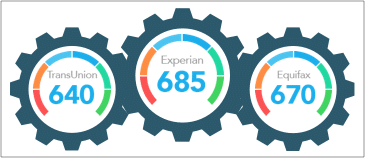Zero-based budgeting is a method where you assign every dollar you earn in a month to some expense, whether bills, entertainment, or savings, so that you have no extra money outside of the budget. Every single penny must go to expenses, debt, and savings.
While zero-based budgeting might seem counter-intuitive, it forces you to budget for things like savings and debt repayment so that you always know where all your money goes. This type of budgeting gives you a plan for your money and a helpful method for paying down debt and improving your financial health.
How Zero-Based Budgeting Works
In simple terms, zero-based budgeting justifies every dollar you spend.
Let’s suppose you earn $4,000 in income every month. With this plan, every expense you have, including not only your bills but your savings, investments and donations must equal $4,000.
It’s a simple, but powerful, budgeting method that puts you in control of your money. Zero-based budgeting solves the mystery of where your money is being spent while pointing you towards your financial goals.
How to Create a Zero-Based Budget
Follow these steps to create your zero-based budget to manage your money:
Determine Your Income
Add up your salary, benefits and any other source of monthly income to determine how much money you should include in your budget.
Enter the total income amount into your budget which you can create with pen and paper, a spreadsheet or even a budgeting app.
Account for Your Expenses
As the current month ends, enter all of your expenses into the budget for the next month.
Remember, every expense must be included. Start with your essentials, like housing, transportation, utilities and food. Then add your costs for your phone, cable and streaming services, entertainment and any other expenditures.
Don’t forget to add miscellaneous categories for seasonal expenses like holiday gifts and trips to see loved ones. You will also need a category for HOA fees, property tax, vehicle registrations and other irregular expenses.
And just for good measure, create and contribute to a “catch-all” category for unexpected expenses like car repairs and trips to the emergency room.
Since your needs will change over time, it’s important to make a new budget each month and abide by it.
Customize Your Expenses
Once you’ve accounted for all of your essential needs, you can now address your wants, debts, savings and individual goals.
Identify all your “wants” and goals such as savings and emergency fund milestones you would like to hit. Perhaps you want to go on a dream vacation or maybe you would like a new car. Also define any money you want to set aside for savings, for investments or for additional payments above the minimum payments required for your debts. Whatever objectives are important to you, assign a category for them in your budget to help you meet your goals.
You may want to consider the 50/30/20 budget rule to help you meet your essential and personal needs. What this means is that you’ll direct 50% of your income to your essential needs, 30% of your income to your wants, and the final 20% towards eliminating debt and savings.
Zero-Out Your Budget
The methodology of a zero-based budget seems simple enough – subtract your expenses from your income until you get to zero – but it does take practice. Don’t be surprised if your income and expenses don’t zero out on the first try. In fact, it may take a few months to get used to it and you can reach zero.
You may need to make adjustments like making one side of the equation higher or lower to meet zero. For example, if your income is not enough to meet your goals consider earning extra money on the side or selling items around your home that you no longer need. If you need your expenses to be lower, look for ways to save money such as canceling little-used subscription services, cutting the cable or using coupons to lower grocery costs.
The Advantages of a Zero-Based Budget
A zero-based budget can help you prevent overspending as you are aware of exactly what is coming in and where it is being spent.
Another benefit is that this method is customizable. You can craft your budget so that it meets your specific needs and goals.
Unlike traditional budgeting, zero-based budgets take into account the reasons why money is spent.
Zero-based budgets permit to spend. This is refreshing for many people who feel budgets are limiting and only tell you what you can’t do. By contrast, zero-based budgets but are empowering.
Consider this: When you create your zero-based budget, you start with your income. Next, you list your essential expenses. After that, you can build anything you want into your budget, specific to your goals and lifestyle.
The Downsides of a Zero-Based Budget
Zero-based budgets are time-intensive. For the budget to be effective, you must consistently monitor your spending.
This budget method doesn’t account for seasonal or occasional expenses such as holiday purchases, unexpected vehicle repairs or wedding trips. You can resolve this problem by assigning budget categories for surprise and seasonal expenses and contribute monthly to them.
Zero-based budgets may not work well for those with irregular or unpredictable monthly income. It’s hard to set a dollar-specific budget when your income varies considerably every month.
The Bottom Line
Zero-based budgeting is important because having a plan for your spending is an effective way to achieve your money objectives. No matter what your financial goals are, you need a budget.
Remember, you control your budget, not the other way around. You assign a purpose for every dollar to address your specific needs, wants, debts, emergency savings fund, retirement goals and so on.
When you are creating your zero-based budget, relax and enjoy the process. Remember, it’s not limiting, it’s liberating and empowering. The budget gives you the freedom to spend money as you see fit while helping you achieve goals.





